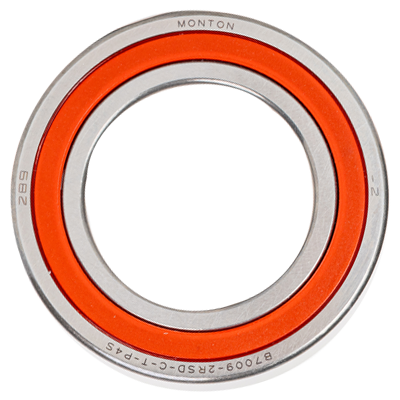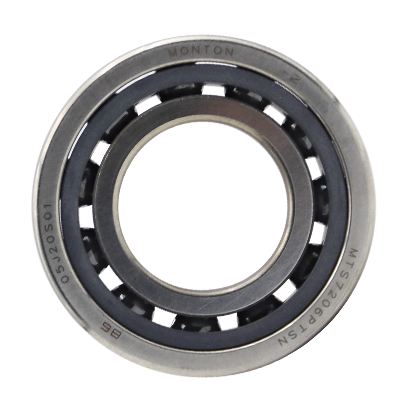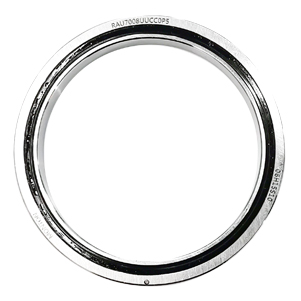Innovative New Gearbox Roller Bearing for the Wind Energy Industry
In this exclusive BearingNews interview, Mr. Raimond Breuker, Director, SKF Wind Industries, discusses his company’s new high durability gearbox bearing for wind. SKF’s development raises the torque density in wind turbine gearboxes by reducing bearing and gear size up to 25% while at the same time avoiding premature failures through improved robustness and rating life.
Importantly, Mr. Breuker, a key player within the wind industry, offers pivotal insights into the methodology and importance of introducing this product into the continuously innovating wind industry. He further explains current industry trends, future outlook, and how SKF manages to reliably drive performance increases that go well beyond current capabilities.
Q: Can you tell us more about your current position at SKF?
In SKF, I am leading a unit called energy industries. In my role I am responsible for the overall strategy towards the wind business within SKF. I am responsible for the strategy definition, deployment, and integration around the global SKF business. It is my responsibility to understand what is happening within our markets, what are the key developments and needs of our customers, and to make sure we develop the vital competences, capabilities, offers, and manufacturing capacity in order to grow the global wind business.
Q: How do you see the future of Wind Energy? What will be the expected volume of wind energy in the total energy production worldwide by 2030?
The absolute amount of wind energy production capacity, as well as the share of wind in electricity production, will significantly increase during the coming decades. Today, in terms of wind, there is an installed capacity of around 850 Gigawatts (GW) of energy production and that will move to 1,700 GW by 2030. That means that the amount of wind energy production capacity will double in the coming 10 years.
There is an annual installation rate today of around 90 GW of wind turbine capacity globally, or approximately 22,000 wind turbines. By 2030, we will reach 150 GW of annual installations, a growth rate of 70%. But 150 is just the tip of the iceberg because if you look at the long-term targets from America, Europe, and China, they talk about net-zero emissions to be achieved in these economies by either 2050 or 2060. In order to have enough renewables such as solar and wind installed to come close to reaching this net-zero emission target, we would need a minimum annual installation of 400 – 500 GW by 2030. By this time, an estimated 25-30% of electricity will come from wind.
We have to bear in mind that of the total energy consumption on the globe today, only 25% comes from electricity, and in this quarter that comes from electricity, 20-25% comes from wind. The other 75% of total energy consumption is burning fossil fuels directly in airplanes, sea transportation, cars, industries, etc. The electricity share of the total energy consumption needs to increase, and within the electricity production, the renewables need to increase.
Q: Can you tell us more about the newly designed bearing? How does this offer impact the industry?
There is a strong driver in the wind industry to lower what we call the levelized cost of energy. In the end it means, how many dollar-cents, or euro-cents does it cost to produce one kilowatt hour, or one megawatt hour out on a wind-farm. There are different drivers that actually influence the production cost of wind energy.
The first one is increasing the power density. The second is increasing service life, and the third is increasing reliability. In order to enable the industry to improve upon a combination of those 3 aspects, we came up with a bearing design, a bearing execution, that enables the industry to take this next level approach. What we have managed is to open up the design space for our customers by introducing what we call a high reliability gearbox bearing offer, that is based on a number of technical innovations which have created a distinctly longer bearing rating life based on the tests that we have performed within SKF on full size products in a large-scale testing program. We have identified that the bearing rating life expectancy of this new offer is up to 5 times longer than the current generation.
When we talk about bearing life, we have the famous ISO bearing life calculation methods. If you design a bearing, typically you use an L10 life. L10 means that 10% of the population statistically will fail within the certain time periods. Within the industry, we see trends moving towards an L1 life, which basically means that the bearing rating life needs to be increased significantly to meet customer requirements.
In a drivetrain of a turbine there are a number of bearing positions, that today, are mechanically the limiting factor. The wind gearbox industry is of course looking into a lot of different options and technological improvements in order to increase the power density of their gearboxes. This is also at the heart of their innovation programs, and this high durability gearbox bearing will enable them to take the next step. We are targeting a number of areas within the gearbox, especially the planet positions as well as the high-speed output shaft position with this offer in order to achieve the performance.
The value for the OE is more downsizing, service life extensions and reliability increases. For the aftermarket, the wind turbine operators and the utility companies that are self-servicing their farms, it offers a possibility to upgrade the performance of an existing fleet in case they go through a repair action or a large-scale refurbishment. About 60% of the total maintenance cost of the installed wind turbine population is related to unplanned maintenance and repairs. This offer will enable unplanned maintenance to be turned into scheduled maintenance, and can also be used as a retrofit as it will increase the robustness of these bearings against unplanned or unfavorable operating conditions.
Q: How does SKF reliably drive performance increases into the wind market?
This industry is continuously innovating at the frontiers of the current capabilities. We are increasing power ratings and increasing the size of these turbines. It is important that in order to keep that innovation pace, any technology that is brought to the market has a certain maturity level before we start to apply this in a broad sense.
Besides effectively designing the product, we find it important that we run an extensive validation program on a true scale. As you can imagine, the service life of these products is significant, so running a large size verification program is not that trivial. But we run full-scale testing, and our proven performance increases as well as the required updated bearing life calculation models have been certified.
At SKF, we invest in what we call data driven maintenance optimization, where we capture data from a turbines control system and condition monitoring systems, and use this data to apply smart algorithms to be able to predict much further ahead when each component needs to be serviced. Having robust products with an improved predictability of remaining life through data engineering opens up a lot of possibilities. Effective data engineering delivered in conjunction with a product release, in the aftermarket for example, provides the previously mentioned ability to move part of the 60% of unplanned turbine maintenance into more planned maintenance, and also reduces the overall amount that is needed. This is how you reliably drive these performance increases into the market.
Q: How was the WindEurope conference in Bilbao?
There are a number of things that I expected from the WindEurope Conference. First of all, and maybe the most relevant, after 24 months or longer of the Covid-19 pandemic, there have been very few of these industry-wide networking opportunities. It is strengthening connections, increasing the level of networking, increasing the level of energy and excitement by all the main players being in one location. I think it was a very important opportunity for key players within the wind industry to physically connect again.
From: https://www.bearing-news.com
28 Apr,2022


 English
English Russian
Russian Chinese
Chinese









